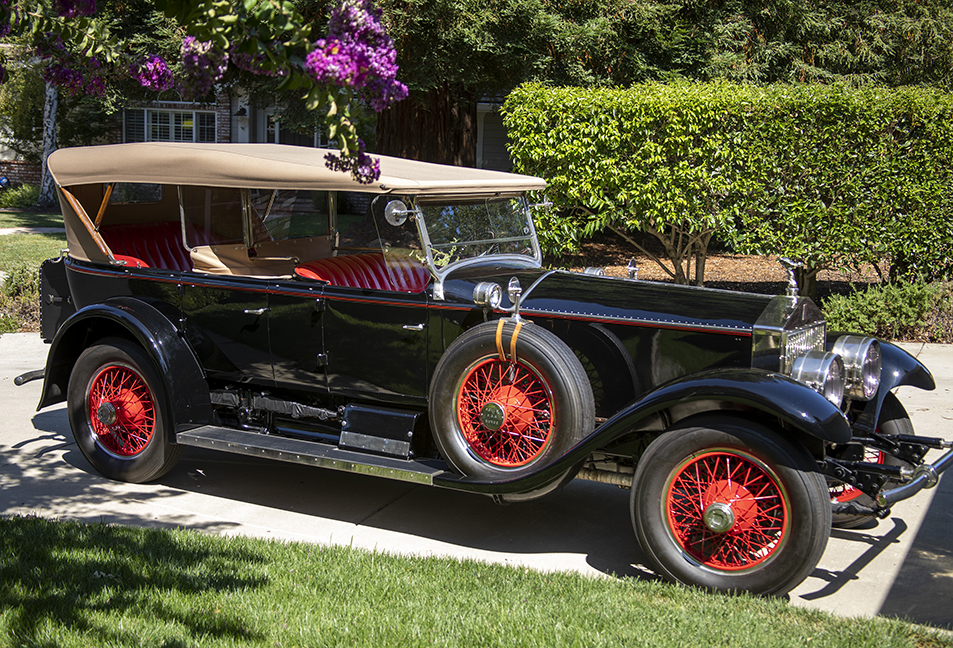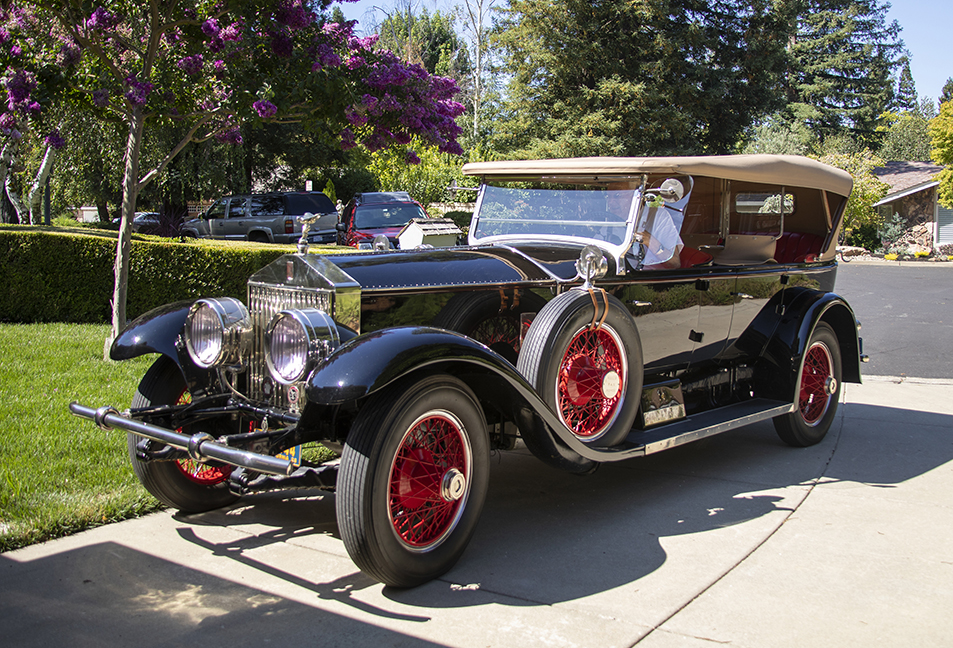When I opened my first article in this series of articles about the art of car collecting, I shared the fact that some people I have spoken with have given me a lot of reasons why they have been inspired to purchase, drive, restore and love their unique automobiles. During a gathering at the Blackhawk Museum this past July, Gordon Johnson explained to me how he admires his three-car collection and invited me to come out to his home to see his award-winning 1928 Rolls-Royce.
During that visit to his home this past month, I asked what inspired or accelerated his interest in buying and selling cars. Gordon thought for a moment and said that his keen interest in cars was not necessarily the thought of owning them. While he always considered old-fashioned, collectible cars as works of art, and admired them for that aspect alone, he confessed that he certainly didn’t buy collectible cars to drive or exhibit them. What he enjoyed most of all was the process of working on and restoring those old cars to the beautiful works of art originally envisioned by their creators.
Having been raised on a farm in Iowa, Gordon was quite familiar with making repairs on farm implements and equipment as his dad needed and encouraged him to do. He explained that the challenge of solving problems is what spurred his automotive acquisition attention. His first collectible car was a 1925 Model T Ford doctor’s coupe which he purchased in the 1960s. He later converted it into a touring car because there just was not enough space in the two-seat coupe for his four-member family.

In the 80s, Gordon and his wife were building a cabin in Northern California near Lake Almanor, and one day as they wandered the back roads in that area, they eventually ended up in Greenville. While driving through town Gordon saw an old car sitting in somebody’s yard. It looked disheveled but unique, and curious to find out what it was, he went up to the house and knocked on the front door. Nobody was home, so he returned to the yard and looked a little closer at the frame of this car immersed in high grass and weeds. It was really in sad shape, but Gordon determined that it was a vehicle called a Paige.
Gordon went to the mailbox, wrote down the name and the address he found there and returned home. With a little research, he discovered that the name and house number on the mailbox was listed in a telephone book, providing him with a number which he consequently called. The woman who answered the phone said that the car was her son’s. She gave Gordon her son’s number and Gordon called, requesting permission to go back out to the property and look at the vehicle more closely. The owner said that he wasn’t even sure if he wanted to sell it, but told Mr. Johnson to go ahead and take another look.
Shortly after that, Gordon drove over to Harrah’s Club in Reno, which had a big car collection and an automotive library. A gentleman in the library informed Gordon that the seven-passenger Paige convertible he had discovered was potentially a collector’s car and that there were not many of them around. Ultimately, Gordon worked out a deal with the owner and purchased that old skeleton of a car, consequently spending the next 12 years rebuilding and refurbishing it. He did most of the work himself, including painting much of the vehicle in his garage. That experience was Gordon’s introduction to serious car collecting and rebuilding, which had come at a time when he was open to a change in his life. He had been a typical stockbroker, primarily focused on an office environment but became a guy who found himself spending two or three nights a week working in a garage, totally engaged in restoring his old car.

A few years later, Gordon came up with the idea to purchase another car that he had long admired—a Rolls-Royce. He bought one of Paul Wartenberg’s books on Rolls Royce vehicles, and while perusing the pages, he stopped when he saw a particular car that he liked. It just happened that at that same time, in the San Francisco Chronicle want-ads section, he found a similar type of collector’s vehicle for sale. The car was located a long way away, in Muskogee, Oklahoma and that the man who owned it lived nearby in Santa Barbara, California. The vehicle could not be driven home after he went to Muskogee to check it out, because in the photographs he was shown, the vehicle was in pieces in a garage in Oklahoma.
None the less, Gordon decided to take a huge risk and literally bought it sight unseen. He then found a car rebuilder in Oklahoma who could at least put it back in basic running condition. After bringing it to the West Coast, he took it to Santa Barbara where it was painted. This car was beautifully restored and is now a shining example of a 1928, T1 Seven Passenger Springfield touring car. Today it is one of only two identical vehicles still in existence.
The first time Gordon took the car to a Pebble Beach Concours d’Elegance, it won third place in its class. At the show, Gordon discovered that the woman who first purchased this vehicle in 1928 paid $19,000 for it, which in 2017 dollars would be worth approximately $490,000. What’s it worth today? Whatever the right person is willing to pay!
Today Gordon also owns two Bentleys, one of which he traded the Paige convertible for, and another, a ‘34 Bentley that is currently on exhibit in the Blackhawk Museum. He bought and sold several other cars over the years as well, including a Delahaye, a Delage, and an Auburn. At one time he had as many as seven cars in a show at Pebble Beach. His love of restoring and buying cars has made him and his wife many close friends who hold similar interests.
Leave a Reply